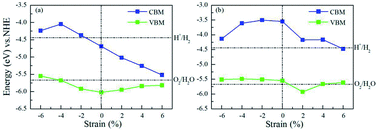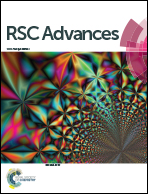ZnO/MoX2 (X = S, Se) composites used for visible light photocatalysis
Abstract
Hybrid density functional has been adopted to investigate the structural, electronic, and optical properties of ZnO/MoS2 and ZnO/MoSe2 composites as compared with the results of ZnO, MoS2, and MoSe2 monolayers. The results indicate that MoS2 and MoSe2 monolayers could contact with monolayer ZnO to form ZnO/MoS2 and ZnO/MoSe2 heterostructures through van der Waals (vdW) interactions. The calculated bandgap of ZnO/MoS2 (ZnO/MoSe2) is narrower than that of ZnO or MoS2 (MoSe2) monolayers, facilitating the shift of light absorption edges of the composites towards visible light in comparison with bare ZnO and MoX2 monolayers. Through the application of strain, the ZnO/MoS2 and ZnO/MoSe2 composites which own suitable bandgaps, band edge positions, efficient charge separation, and good visible light absorption will be promising for visible light photocatalytic water splitting. These results provide a route for design and development of efficient ZnO/MoS2 and ZnO/MoSe2 photocatalysts for water splitting.



 Please wait while we load your content...
Please wait while we load your content...